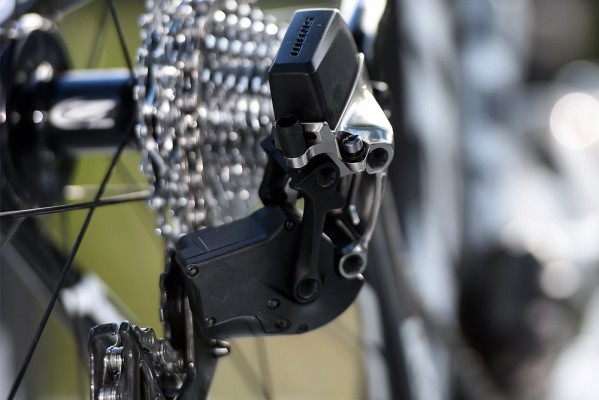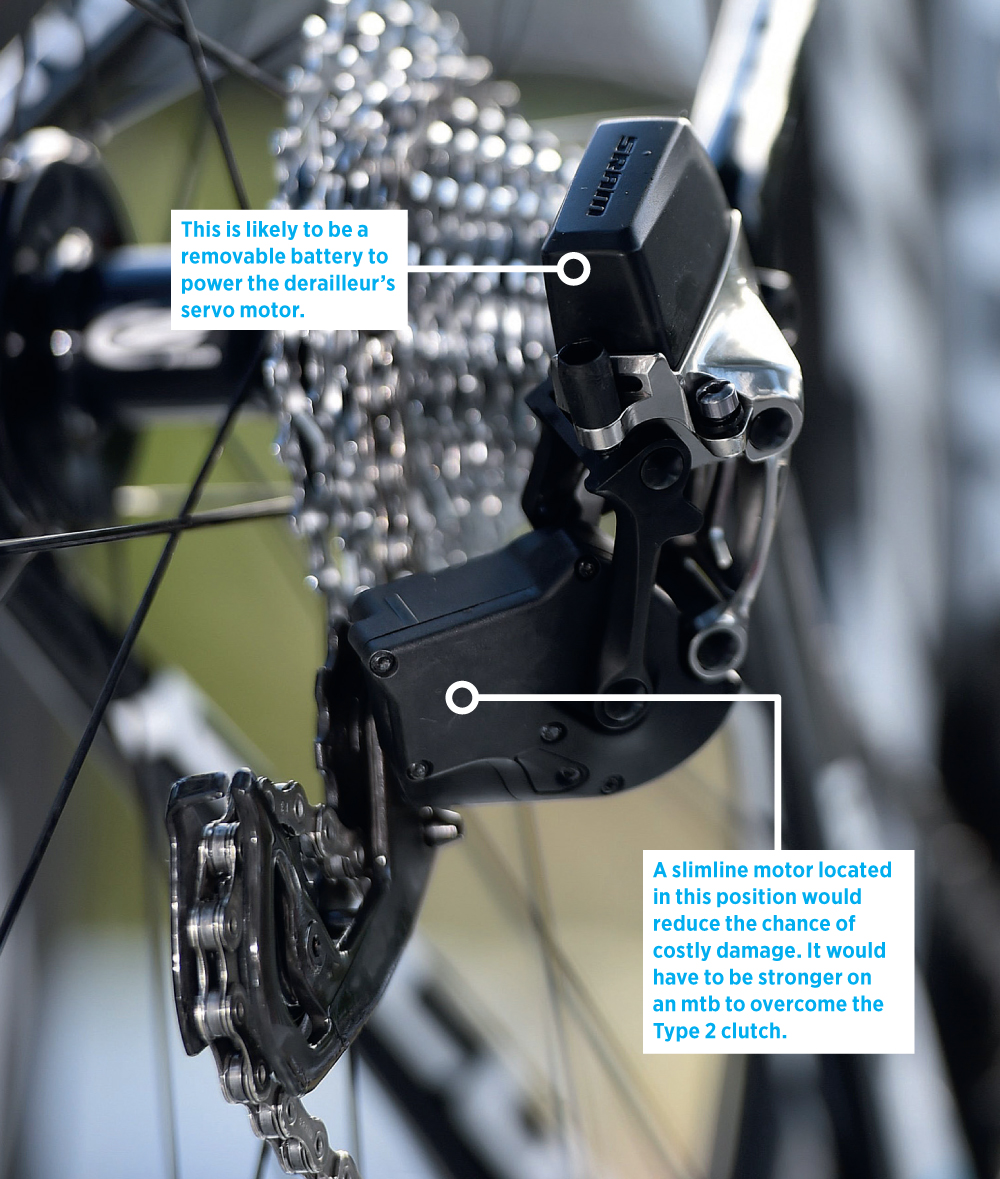How SRAM could cut the cable on gear shifting
Electronic shifting for mountain bikes is now a reality thanks to Shimano’s XTR Di2 drivetrain. But spy shots of a new system, currently undergoing testing by a pro road team, could render this groupset out of date before it even hits the market.
The system is completely wireless, it’s being developed by SRAM and, chances are, it will probably find its way onto a mountain bike sooner or later.
So what do we know about it? Well, not much at the moment, but it definitely uses batteries in both the shifters and derailleurs and requires a robust signal that doesn’t suffer interference from smartphones and GPS units — it’s not known whether SRAM is using Bluetooth, ANT+ or a something else altogether. Obviously the batteries need to have a decent life, they have to be easy to charge and — to work in an off-road environment — the electronics have to be well sealed and robust.
While it’s pure speculation that SRAM will even consider bringing such technology to the mtb market, the opportunity to upstage Shimano may well be enough to overlook the potentially small sales and limited performance benefits. And the fact that SRAM is committed to single-ring drivetrains will definitely make development easier — not having to engineer a front derailleur will save time and money, while reducing weight from the final product.
Thinking laterally, there’s also no reason why a wireless system couldn’t replace the hydraulic remote on a Reverb dropper post, something that would simplify cable routing and make installation and maintenance a doddle.
Of course all we could get out of SRAM was: “product technology is still in a development phase with testing and refinement yet to occur. It’s being tested by some of our pro riders.”





